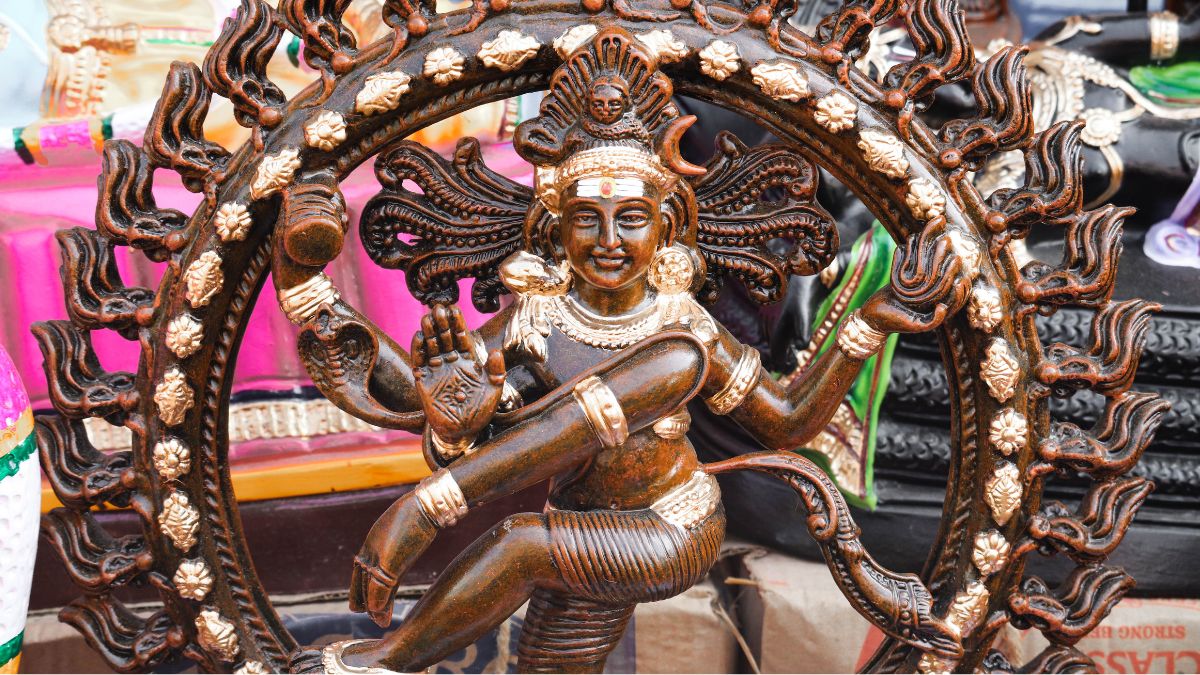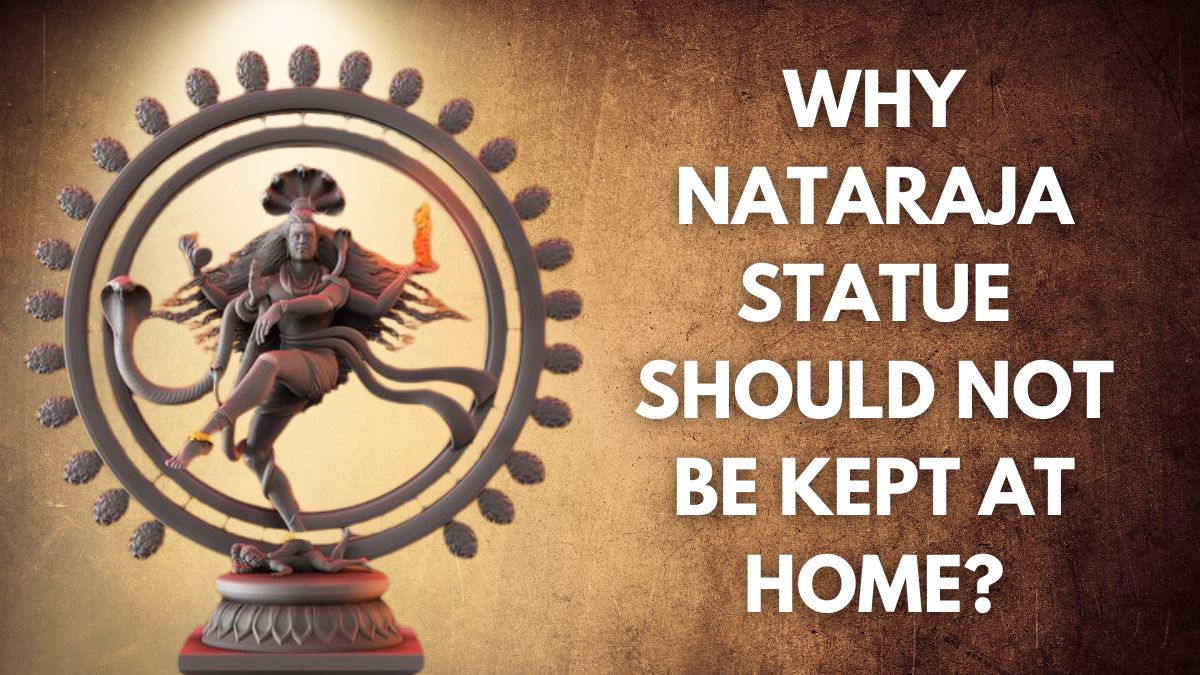- By Kashish Rai
- Tue, 13 Feb 2024 04:11 PM (IST)
- Source:JND
The dancing manifestation of Lord Shiva, called Nataraj in Hinduism, is a symbol of Shakti, or life energy. The first depiction of the dancing Lord Shiva was found in temple artwork from the fifth and sixth centuries CE. In many South Indian temples, Lord Shiva is depicted as the cosmic dancer, embodied in stone or metal. Lord Shiva is seen as the origin of all movement in the cosmos, and the universe's destruction is symbolised by his doomsday dance.
The fire arch that surrounds Natraj symbolises both the cosmic fire that produces and destroys everything, as well as the cycle of life and death. Hence, the cosmic dance of creation and annihilation is represented by the Nataraj. However, it is not auspicious to keep the Nataraja figurine of Lord Shiva at home. Let us know why.

Nataraja is the "Cosmic Dancer" manifestation of Lord Shiva. (Image Source: Canva)
Why Is It Not Auspicious To Keep Nataraja Statue At Home?
A painting or idol of Natraj should not be kept in the house since, according to Vastu, this particular form of Shiva is associated with tandav, or destruction. Hindu sculptures and the Vedas portray the Nataraja pose as a sign of artistic skill and as Lord Shiva dancing while in a trance. Even though Natraj is aesthetically pleasing, it is best not to keep it at the house temple as it symbolises Lord Shiva's wrath.
If you wish to keep the Nataraj statue in your house, make sure it appears content and at ease rather than displaying strong feelings of rage. Make sure you only keep the Natraj idol and not any other idols of other gods or even other Shiva statues. Natraj should never be placed on the ground. The idol should always be placed on a table or a platform.
ALSO READ: 5 Ways Scented Items Or Perfumes Can Help Bring Good Luck As Per Vastu Shastra
Symbolism Of Nataraja In Hinduism
Shiva Nataraja symbolises the endless cycle of time and incorporates Shiva's three duties as the creator, preserver, and destroyer of the cosmos. The universe is formed, maintained, and resolved during the Tandava, which Shiva performs in his guise as Natraj, or the "Lord of Dancing." The term "King of Dance" is Natraj, derived from the words "Nata" (dance) and "Raja" (king).
(Disclaimer: This is based on general public information. Jagran English does not confirm its veracity. Before adopting any measures, consult an expert from the relevant field.)

